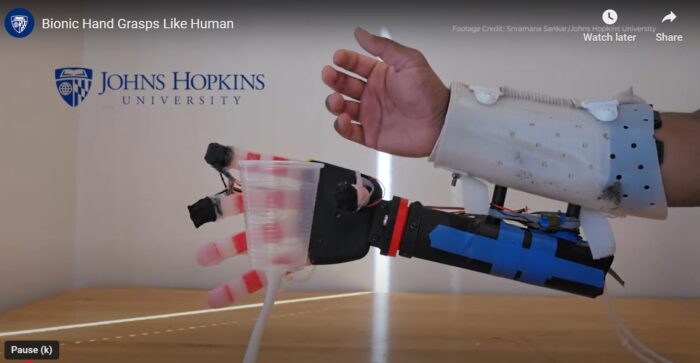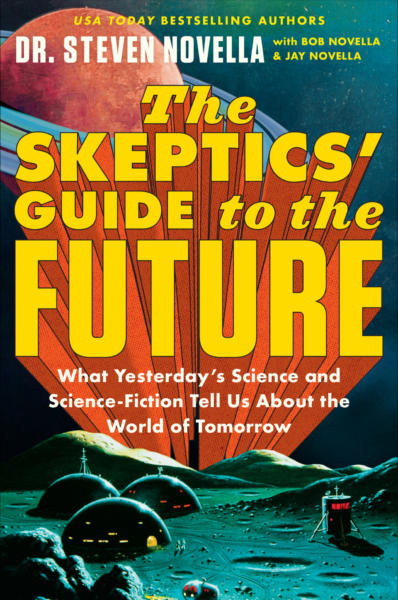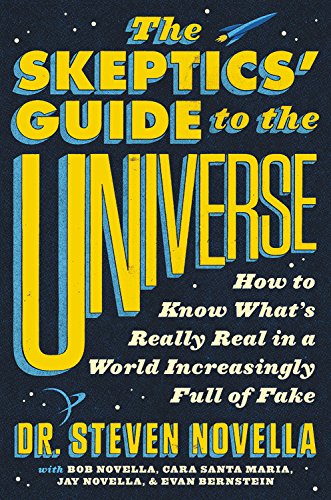Apr
07
2025
I think it’s increasingly difficult to argue that the recent boom in artificial intelligence (AI) is mostly hype. There is a lot of hype, but don’t let that distract you from the real progress. The best indication of this is applications in scientific research, because the outcomes are measurable and objective. AI applications are particularly adept at finding patterns in vast sets of data, finding patterns in hours that might have required months of traditional research. We recently discussed on the SGU using AI to sequence proteins, which is the direction that researchers are going in. Compared to the traditional method using AI analysis is faster and better at identifying novel proteins (not already in the database).
One SGU listener asked an interesting question after our discussion of AI and protein sequencing that I wanted to explore – can we apply the same approach to DNA and can this result in reverse-engineering the genetic sequence from the desired traits? AI is already transforming genetic research. AI apps allow for faster, cheaper, and more accurate DNA sequencing, while also allowing for the identification of gene variants that correlate with a disease or a trait. Genetics is in the sweet spot for these AI applications – using large databases to find meaningful patterns. How far will this tech go, and how quickly.
We have already sequenced the DNA of over 3,000 species. This number is increasing quickly, accelerated by AI sequencing techniques. We also have a lot of data about gene sequences and the resulting proteins, non-coding regulatory DNA, gene variants and disease states, and developmental biology. If we trained an AI on all this data, could it then make predictions about the effects of novel gene variants? Could it also go from a desired morphological trait back to the genetic sequence that would produce that trait? Again, this sounds like the perfect application for AI.
Continue Reading »
Apr
04
2025
 Yes – it is well-documented that in many industries the design of products incorporates a plan for when the product will need to be replaced. A blatant example was in 1924 when an international meeting of lightbulb manufacturers decided to limit the lifespan of lightbulbs to 1,000 hours, so that consumers would have to constantly replace them. This artificial limitation did not end until CFLs and then LED lightbulbs largely replaced incandescent bulbs.
Yes – it is well-documented that in many industries the design of products incorporates a plan for when the product will need to be replaced. A blatant example was in 1924 when an international meeting of lightbulb manufacturers decided to limit the lifespan of lightbulbs to 1,000 hours, so that consumers would have to constantly replace them. This artificial limitation did not end until CFLs and then LED lightbulbs largely replaced incandescent bulbs.
But – it’s more complicated than you might think (it always is). Planned obsolescence is not always about gimping products so they break faster. It often is – products are made so they are difficult to repair or upgrade and arbitrary fashions change specifically to create demand for new versions. But often there is a rational decision to limit product quality. Some products, like kids’ clothes, have a short use timeline, so consumers prefer cheap to durable. There is also a very good (for the consumer) example of true obsolescence – sometimes the technology simply advances, offering better products. Durability is not the only nor the primary attribute determining the quality of a product, and it makes no sense to build in expensive durability for a product that consumers will want to replace. So there is a complex dynamic among various product features, with durability being only one feature.
We can also ask the question, for any product or class of products, is durability actually decreasing over time? Consumers are now on the alert for planned obsolescence, and this may produce the confirmation bias of seeing it everywhere, even when it’s not true. A recent study looking at big-ticket appliances shows how complex this question can be. This is a Norwegian study looking at the lifespan of large appliances over decades, starting in the 1950s.
First, they found that for most large appliances, there was no decrease in lifespan over this time period. So the phenomenon simply did not exist for the items that homeowning consumers care the most about, their expensive appliances. There were two exceptions, however – ovens and washing machines. Each has its own explanations.
Continue Reading »
Apr
03
2025
 It is generally accepted that the transition from hunter-gatherer communities to agriculture was the single most important event in human history, ultimately giving rise to all of civilization. The transition started to take place around 12,000 years ago in the Middle East, China, and Mesoamerica, leading to the domestication of plants and animals, a stable food supply, permanent settlements, and the ability to support people not engaged full time in food production. But why, exactly, did this transition occur when and where it did?
It is generally accepted that the transition from hunter-gatherer communities to agriculture was the single most important event in human history, ultimately giving rise to all of civilization. The transition started to take place around 12,000 years ago in the Middle East, China, and Mesoamerica, leading to the domestication of plants and animals, a stable food supply, permanent settlements, and the ability to support people not engaged full time in food production. But why, exactly, did this transition occur when and where it did?
Existing theories focus on external factors. The changing climate lead to fertile areas of land with lots of rainfall, at the same time food sources for hunting and gathering were scarce. This occurred at the end of the last glacial period. This climate also favored the thriving of cereals, providing lots of raw material for domestication. There was therefore the opportunity and the drive to find another reliable food source. There also, however, needs to be the means. Humanity at that time had the requisite technology to begin farming, and agricultural technology advanced steadily.
A new study looks at another aspect of the rise of agriculture, demographic interactions. How were these new agricultural communities interacting with hunter-gather communities, and with each other? The study is mainly about developing and testing an inferential model to look at these questions. Here is a quick summary from the paper:
“We illustrate the opportunities offered by this approach by investigating three archaeological case studies on the diffusion of farming, shedding light on the role played by population growth rates, cultural assimilation, and competition in shaping the demographic trajectories during the transition to agriculture.”
In part the transition to agriculture occurred through increased population growth of agricultural communities, and cultural assimilation of hunter-gatherer groups who were competing for the same physical space. Mostly they were validating the model by looking at test cases to see if the model matched empirical data, which apparently it does.
Continue Reading »
Mar
28
2025
 The fashion retailer, H&M, has announced that they will start using AI generated digital twins of models in some of their advertising. This has sparked another round of discussion about the use of AI to replace artists of various kinds.
The fashion retailer, H&M, has announced that they will start using AI generated digital twins of models in some of their advertising. This has sparked another round of discussion about the use of AI to replace artists of various kinds.
Regarding the H&M announcement specifically, they said they will use digital twins of models that have already modeled for them, and only with their explicit permission, while the models retain full ownership of their image and brand. They will also be compensated for their use. On social media platforms the use of AI-generated imagery will carry a watermark (often required) indicating that the images are AI-generated.
It seems clear that H&M is dipping their toe into this pool, doing everything they can to address any possible criticism. They will get explicit permission, compensate models, and watermark their ads. But of course, this has not shielded them from criticism. According to the BBC:
American influencer Morgan Riddle called H&M’s move “shameful” in a post on her Instagram stories.
“RIP to all the other jobs on shoot sets that this will take away,” she posted.
This is an interesting topic for discussion, so here’s my two-cents. I am generally not compelled by arguments about losing existing jobs. I know this can come off as callous, as it’s not my job on the line, but there is a bigger issue here. Technological advancement generally leads to “creative destruction” in the marketplace. Obsolete jobs are lost, and new jobs are created. We should not hold back progress in order to preserve obsolete jobs.
Continue Reading »
Mar
24
2025
 We had a fascinating discussion on this week’s SGU that I wanted to bring here – the subject of artificial intelligence programs (AI), specifically large language models (LLMs), lying. The starting point for the discussion was this study, which looked at punishing LLMs as a method of inhibiting their lying. What fascinated me the most is the potential analogy to neuroscience – are these LLMs behaving like people?
We had a fascinating discussion on this week’s SGU that I wanted to bring here – the subject of artificial intelligence programs (AI), specifically large language models (LLMs), lying. The starting point for the discussion was this study, which looked at punishing LLMs as a method of inhibiting their lying. What fascinated me the most is the potential analogy to neuroscience – are these LLMs behaving like people?
LLMs use neural networks (specifically a transformer model) which mimic to some extent the logic of information processing used in mammalian brains. The important bit is that they can be trained, with the network adjusting to the training data in order to achieve some preset goal. LLMs are generally trained on massive sets of data (such as the internet), and are quite good at mimicking human language, and even works of art, sound, and video. But anyone with any experience using this latest crop of AI has experienced AI “hallucinations”. In short – LLMs can make stuff up. This is a significant problem and limits their reliability.
There is also a related problem. Hallucinations result from the LLM finding patterns, and some patterns are illusory. The LLM essentially makes the incorrect inference from limited data. This is the AI version of an optical illusion. They had a reason in the training data for thinking their false claim was true, but it isn’t. (I am using terms like “thinking” here metaphorically, so don’t take it too literally. These LLMs are not sentient.) But sometimes LLMs don’t inadvertently hallucinate, they deliberately lie. It’s hard not to keep using these metaphors, but what I mean is that the LLM was not fooled by inferential information, it created a false claim as a way to achieve its goal. Why would it do this?
Well, one method of training is to reward the LLM when it gets the right answer. This reward can be provided by a human – checking a box when the LLM gives a correct answer. But this can be time consuming, so they have build self-rewarding language models. Essentially you have a separate algorithm which assessed the output and reward the desired outcome. So, in essence, the goal of the LLM is not to produce the correct answer, but to get the reward. So if you tell the LLM to solve a particular problem, it may find (by exploring the potential solution space) that the most efficient way to obtain the reward is to lie – to say it has solved the problem when it has not. How do we keep it from doing this.
Continue Reading »
Mar
13
2025
 If you think about the human hand as a work of engineering, it is absolutely incredible. The level of fine motor control is extreme. It is responsive and precise. It has robust sensory feedback. It combines both rigid and soft components, so that it is able to grip and lift heavy objects and also cradle and manipulate soft or delicate objects. Trying to replicate this functionality with modern robotics have been challenging, to say the least. But engineers are making steady incremental progress.
If you think about the human hand as a work of engineering, it is absolutely incredible. The level of fine motor control is extreme. It is responsive and precise. It has robust sensory feedback. It combines both rigid and soft components, so that it is able to grip and lift heavy objects and also cradle and manipulate soft or delicate objects. Trying to replicate this functionality with modern robotics have been challenging, to say the least. But engineers are making steady incremental progress.
I like to check it on how the technology is developing, especially when there appears to be a significant advance. There are two basic applications for robotic hands – for robots and for prosthetics for people who have lost their hand to disease or injury. For the latter we need not only advances in the robotics of the hand itself, but also in the brain-machine interface that controls the hand. Over the years we have seen improvements in this control, using implanted brain electrodes, scalp surface electrodes, and muscle electrodes.
We have also seen the incorporation of sensory feedback, which greatly enhances control. Without this feedback, users have to look at the limb they are trying to control. With sensory feedback, they don’t have to look at it, overall control is enhanced, and the robotic limb feels much more natural. Another recent addition to this technology has been the incorporation of AI, to enhance the learning of the system during training. The software that translates the electrical signals from the user into desired robotic movements is much faster and more accurate than without AI algorithms.
A team at Johns Hopkins is trying to take the robotic hand to the next level – A natural biomimetic prosthetic hand with neuromorphic tactile sensing for precise and compliant grasping. They are specifically trying to mimic a human hand, which is a good approach. Why second-guess millions of years of evolutionary tinkering? They call their system a “hybrid” robotic hand because it incorporates both rigid and soft components. Robotic hands with rigid parts can be strong, but have difficulty handling soft or delicate objects. Hands made of soft parts are good for soft objects, but tend to be weak. The hybrid approach makes sense, and mimics a human hand with internal bones covered in muscles and then soft skin. Continue Reading »
Mar
03
2025
 Remember CRISPR (clustered regularly interspaced short palindromic repeats) – that new gene-editing system which is faster and cheaper than anything that came before it? CRISPR is derived from bacterial systems which uses guide RNA to target a specific sequence on a DNA strand. It is coupled with a Cas (CRISPR Associated) protein which can do things like cleave the DNA at the targeted location. We are really just at the beginning of exploring the potential of this new system, in both research and therapeutics.
Remember CRISPR (clustered regularly interspaced short palindromic repeats) – that new gene-editing system which is faster and cheaper than anything that came before it? CRISPR is derived from bacterial systems which uses guide RNA to target a specific sequence on a DNA strand. It is coupled with a Cas (CRISPR Associated) protein which can do things like cleave the DNA at the targeted location. We are really just at the beginning of exploring the potential of this new system, in both research and therapeutics.
Well – we may already have something better than CSRISP: TIGR-Tas. This is also an RNA-based system for targeting specific sequences of DNA and delivering a TIGR associated protein to perform a specific function. TIGR (Tandem Interspaced Guide RNA) may have some useful advantages of CRISPR.
As presented in a new paper, TIGR is actually a family of gene editing systems. It was discovered not by happy accident, but by specifically looking for it. As the paper details: “through iterative structural and sequence homology-based mining starting with a guide RNA-interaction domain of Cas9”. This means they started with Cas9 and then trolled through the vast database of phage and parasitic bacteria for similar sequences. They found what they were looking for – another family of RNA-guided gene editing systems.
Like CRISPR, TIGR is an RNA guided system, and has a modular structure. Different Tas proteins can be coupled with the TIGR to perform different actions at the targeted site. But there are several potential advantages for TIGR over CRISPR. Like CRISPR it is RNA guided, but TIGR uses both strands of the DNA to find its target sequence. This “dual guided” approach may lead to fewer off-target errors. While CRISPR works very well, there is a trade-off in CRISPR systems between speed and precision. The faster it works, the greater the number of off-target actions – like cleaving the DNA in the wrong place. The hope is that TIGR will make fewer off-target mistakes because of better targeting.
Continue Reading »
Feb
27
2025
 Small nuclear reactors have been around since the 1950s. They mostly have been used in military ships, like aircraft carriers and submarines. They have the specific advantage that such ships could remain at sea for long periods of time without needing to refuel. But small modular reactors have never taken off as a source of grid energy. The prevailing opinion for why this is seems to be that they are simply not cost effective. Larger reactors, which are already expensive endeavors, produce more megawatts per dollar. SMRs are simply too cost inefficient.
Small nuclear reactors have been around since the 1950s. They mostly have been used in military ships, like aircraft carriers and submarines. They have the specific advantage that such ships could remain at sea for long periods of time without needing to refuel. But small modular reactors have never taken off as a source of grid energy. The prevailing opinion for why this is seems to be that they are simply not cost effective. Larger reactors, which are already expensive endeavors, produce more megawatts per dollar. SMRs are simply too cost inefficient.
This is unfortunate because they have a lot of advantages. Their initial investment is smaller, even though the cost per unit energy is more. They are safe and reliable. They have a small footprint. And they are scalable. The military uses them because the strategic advantages are worth the higher cost. Some argue that the zero carbon on demand energy they provide is worth the higher cost, and I think this is a solid argument. Also there are continued attempts to develop the technology to bring down the cost. Arguably it may be worth subsidizing the SMR industry so that the technology can be developed to greater cost effectiveness. Decarbonizing the energy sector is worth the investment.
But there is another question – are there civilian applications that would also justify the higher cost per unit energy? I have recently encountered two that are interesting. The first is a direct extension of the military use – using an SMR to power a cargo ship. South Korean company, HD Korea Shipbuilding & Offshore Engineering, has revealed their designs for an SMR powered cargo ship, and has received “approval in principle”. Obviously this is just the beginning phase – they need to actually develop the design and get full approval. But the concept is compelling.
Continue Reading »
Feb
24
2025
 The flying car is an icon of futuristic technology – in more ways than one. This is partly why I can’t resist a good flying car story. I was recently sent this YouTube video on the Alef flying car. The company says his is a street-legal flying car, with vertical take off and landing. They also demonstrate that they have tested this vehicle in urban environments. They are available now for pre-order (estimated price, $300k). The company claims: “Alef will deliver a safe, affordable vehicle to transform your everyday commute.” The claim sounds reminiscent of claims made for the Segway (which recently went defunct).
The flying car is an icon of futuristic technology – in more ways than one. This is partly why I can’t resist a good flying car story. I was recently sent this YouTube video on the Alef flying car. The company says his is a street-legal flying car, with vertical take off and landing. They also demonstrate that they have tested this vehicle in urban environments. They are available now for pre-order (estimated price, $300k). The company claims: “Alef will deliver a safe, affordable vehicle to transform your everyday commute.” The claim sounds reminiscent of claims made for the Segway (which recently went defunct).
The flying car has a long history as a promise of future technology. As a technology buff, nerd, and sci-fi fan, I have been fascinated with them my entire life. I have also seen countless prototype flying cars come and go, an endless progression of overhyped promises that have never delivered. I try not to let this make my cynical – but I am cautious and skeptical. I even wrote an entire book about the foibles of predicting future technology, in which flying cars featured prominently.
So of course I met the claims for the Alef flying car with a fair degree of skepticism – which has proven entirely justified. First I will say that the Alef flying car does appear to function as a car and can fly like a drone. But I immediately noticed in the video that as a car, it does not go terribly fast. You have to do some digging, but I found the technical specs which say that it has a maximum road speed of 25 MPH. It also claims a road range of 200 miles, and an air range of 110 miles. It is an EV with a gas motor to extend battery life in flight, with eight electric motors and eight propellers. It is also single passenger. It’s basically a drone with a frame shaped like a car with tires and weak motors – a drone that can taxi on roads.
It’s a good illustration of the inherent hurdles to a fully-realized flying car of our dreams, mostly rooted in the laws of physics. But before I go there, as is, can this be a useful vehicle? I suppose, for very specific applications. It is being marketed as a commuter car, which makes sense, as it is single passenger (this is no family car). The limited range also makes it suited to commuting (average daily commutes in the US is around 42 miles).
Continue Reading »
Feb
21
2025
 I am fascinated by the technologies that live largely behind the scenes. These are not generally consumer devices, but they may be components of consumer products, or may largely have a role in industry – but they make our modern world possible, or make it much better. In addition I think that material science is largely underrated in terms of popular appeal, but it is material science that often make all other technologies possible or feasible. There is another aspect of technology that I have been increasingly interested in – solid state technology. These are, generally speaking, devices that use electricity rather than moving parts. You are likely familiar with solid state drives, that do not have spinning discs and therefore are smaller, use less power, and last longer. One big advantage of electric vehicles is that they are largely solid state, without the moving parts of an engine.
I am fascinated by the technologies that live largely behind the scenes. These are not generally consumer devices, but they may be components of consumer products, or may largely have a role in industry – but they make our modern world possible, or make it much better. In addition I think that material science is largely underrated in terms of popular appeal, but it is material science that often make all other technologies possible or feasible. There is another aspect of technology that I have been increasingly interested in – solid state technology. These are, generally speaking, devices that use electricity rather than moving parts. You are likely familiar with solid state drives, that do not have spinning discs and therefore are smaller, use less power, and last longer. One big advantage of electric vehicles is that they are largely solid state, without the moving parts of an engine.
There is a technology that combines all three of these features – it is a component technology, dependent on material science, and solid state: thermoelectric devices. This may not sound sexy, but bear with me, this is cool (pun intended) technology. Thermoelectric materials are those that convert electricity into a temperature difference across a material, or convert a temperature difference into electricity. In reality, everything is a thermoelectric material, but most materials have insignificant thermoelectric effects (so are functionally not thermoelectric).
Thermoelectric devices can be used to harvest energy, from any temperature difference. These are generally not large amounts of energy – we don’t have thermoelectric power plants connected to the grid – and they are currently not practical and cost effective enough for a large scale. This may be possible in the future, but not today. However, for applications that require small amounts of energy, harvesting that energy from ambient sources like small temperature differences is feasible.
Continue Reading »

 Yes –
Yes –  It is generally accepted that the transition from hunter-gatherer communities to agriculture was the single most important event in human history, ultimately giving rise to all of civilization. The transition started to take place around 12,000 years ago in the Middle East, China, and Mesoamerica, leading to the domestication of plants and animals, a stable food supply, permanent settlements, and the ability to support people not engaged full time in food production.
It is generally accepted that the transition from hunter-gatherer communities to agriculture was the single most important event in human history, ultimately giving rise to all of civilization. The transition started to take place around 12,000 years ago in the Middle East, China, and Mesoamerica, leading to the domestication of plants and animals, a stable food supply, permanent settlements, and the ability to support people not engaged full time in food production.  The fashion retailer, H&M, has announced that they will
The fashion retailer, H&M, has announced that they will  We had a fascinating discussion on
We had a fascinating discussion on  If you think about the human hand as a work of engineering, it is absolutely incredible. The level of fine motor control is extreme. It is responsive and precise. It has robust sensory feedback. It combines both rigid and soft components, so that it is able to grip and lift heavy objects and also cradle and manipulate soft or delicate objects. Trying to replicate this functionality with modern robotics have been challenging, to say the least. But engineers are making steady incremental progress.
If you think about the human hand as a work of engineering, it is absolutely incredible. The level of fine motor control is extreme. It is responsive and precise. It has robust sensory feedback. It combines both rigid and soft components, so that it is able to grip and lift heavy objects and also cradle and manipulate soft or delicate objects. Trying to replicate this functionality with modern robotics have been challenging, to say the least. But engineers are making steady incremental progress. Remember
Remember  Small nuclear reactors have been around since the 1950s. They mostly have been used in military ships, like aircraft carriers and submarines. They have the specific advantage that such ships could remain at sea for long periods of time without needing to refuel. But small modular reactors have never taken off as a source of grid energy. The
Small nuclear reactors have been around since the 1950s. They mostly have been used in military ships, like aircraft carriers and submarines. They have the specific advantage that such ships could remain at sea for long periods of time without needing to refuel. But small modular reactors have never taken off as a source of grid energy. The  The flying car is an icon of futuristic technology – in more ways than one. This is partly why I can’t resist a good flying car story. I was recently sent
The flying car is an icon of futuristic technology – in more ways than one. This is partly why I can’t resist a good flying car story. I was recently sent  I am fascinated by the technologies that live largely behind the scenes. These are not generally consumer devices, but they may be components of consumer products, or may largely have a role in industry – but they make our modern world possible, or make it much better. In addition I think that material science is largely underrated in terms of popular appeal, but it is material science that often make all other technologies possible or feasible. There is another aspect of technology that I have been increasingly interested in – solid state technology. These are, generally speaking, devices that use electricity rather than moving parts. You are likely familiar with solid state drives, that do not have spinning discs and therefore are smaller, use less power, and last longer. One big advantage of electric vehicles is that they are largely solid state, without the moving parts of an engine.
I am fascinated by the technologies that live largely behind the scenes. These are not generally consumer devices, but they may be components of consumer products, or may largely have a role in industry – but they make our modern world possible, or make it much better. In addition I think that material science is largely underrated in terms of popular appeal, but it is material science that often make all other technologies possible or feasible. There is another aspect of technology that I have been increasingly interested in – solid state technology. These are, generally speaking, devices that use electricity rather than moving parts. You are likely familiar with solid state drives, that do not have spinning discs and therefore are smaller, use less power, and last longer. One big advantage of electric vehicles is that they are largely solid state, without the moving parts of an engine.




